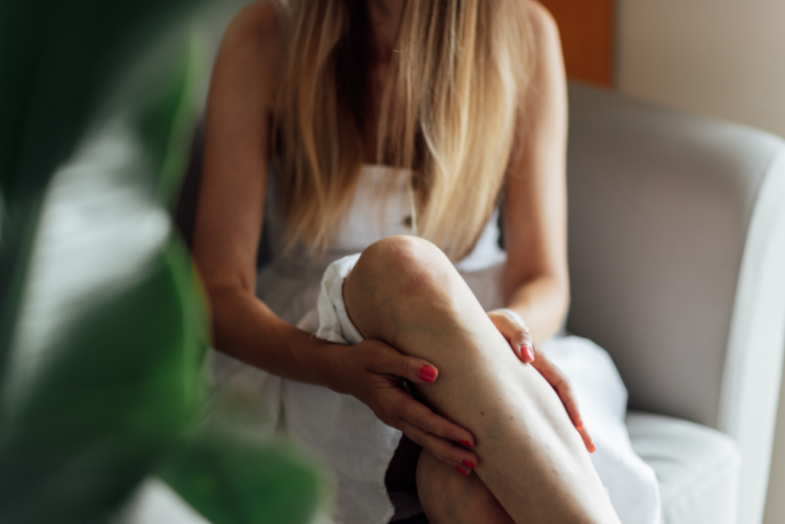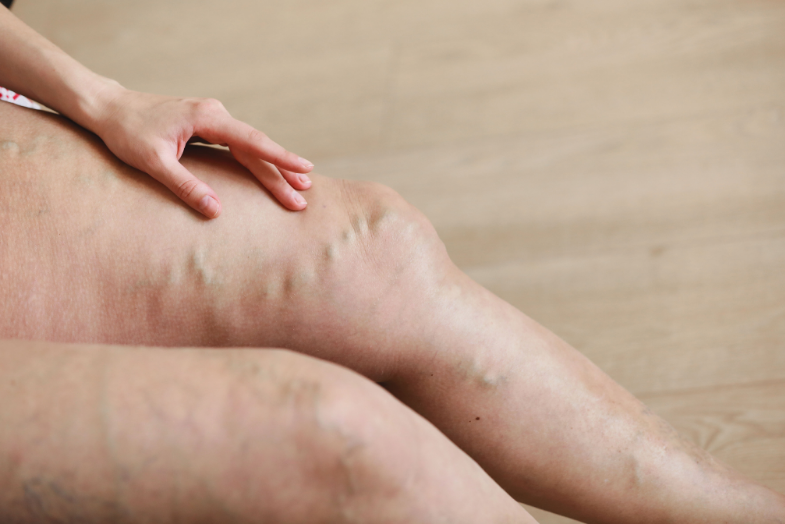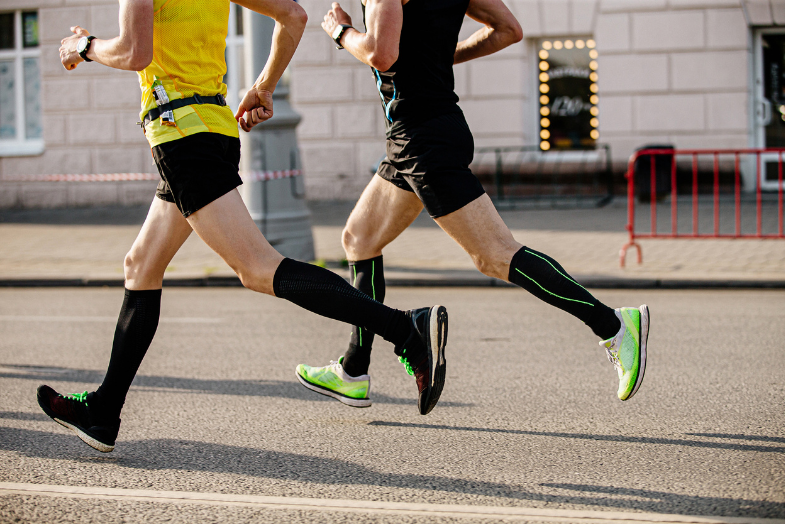The Benefits of Wearing Compression Stockings
The benefits of wearing compression stockings can help many different people with many different circulatory problems. As the name suggests, compression stockings apply compression, or pressure to the lower legs to help blood flow and reduce swelling.
Has your doctor prescribed compression socks or compression stockings? Are you wondering what the benefits of compression stockings are and how they can help your specific issues? In this article, you will learn the benefits of wearing compression stockings, the types of compression socks, and learn how to answer the question, “what do compression socks do?”
 Compression Socks
Compression Socks
So what are the benefits of wearing compression stockings? Are they limited to circulatory issues or can they help with other ailments and issues that cause pain? Here is a list of the major benefits of wearing compression stockings.
What Do Compression Socks Do?
The benefits of compression stockings are born from what compression stockings do. So, what do compression stockings do? The main purpose of compression socks is to improve blood flow through pressure. Compression socks come in a variety of lengths and can look very similar to normal socks; they just hug your legs a little tighter to improve circulation for anyone who needs it.
Improved Blood Flow
Improved blood flow is the number one benefit of wearing compression stockings. The pressure that compression socks provide gently pushes the blood upward. This prevents blood from pooling in your legs, swelling, and blood clots. All other benefits of wearing compression stockings are a result of improved blood flow. Compression stockings help improve blood flow and as a result, help keep your feet and ankles healthy as well as your entire body.
Reduce Swelling and Fluid Retention, Edema
Fluid Retention is referred to as Edema. Poor circulation can cause fluid to leak from your veins into your muscles. The swelling can be uncomfortable, but as one of the benefits of wearing compression stockings is improved circulation, compression socks can also help reduce swelling and edema caused by poor blood flow.
Better Sleep
Another benefit of wearing compression stockings is better sleep. Wearing compression socks at night can help restless leg syndrome sufferers. It has also been shown to have a mild benefit for those who struggle with sleep apnea.
Deep Vein Thrombosis Symptom Relief
Patients suffering from Deep Vein Thrombosis can use compression socks to relieve their symptoms. Deep Vein Thrombosis occurs when a blood clot forms in the deep veins of the body. This usually occurs in the legs and can lead to pain, swelling, and a change in skin color. Compression socks can help these symptoms and can even prevent Deep Vein Thrombosis symptoms in the first place.
Varicose Vein Symptom Relief
Patients suffering from Varicose Veins can use compression socks to decrease the symptoms of Varicose Veins. Varicose Veins occur when blood does not flow correctly from the veins to the heart. Instead the blood pools behind the small valves in the vein. The collected blood causes swelling and pain. Compression socks do a good job of pushing collected blood upward towards the heart, relieving the symptoms caused by the stuck blood. You may need other interventions like surgery to completely remove and heal varicose veins, but compression socks can help improve your quality of life and prevent the varicose veins from getting worse.
 Helps Diabetic Foot Issues
Helps Diabetic Foot Issues
Type two Diabetics frequently suffer from foot issues. Diabetics might find their blood vessels damaged, causing pain, swelling, ineffective circulation, and an increased risk for infection. One of the benefits of wearing compression stockings is swelling control and better circulation. Diabetics might find that wearing compression socks helps them control the foot symptoms related to the disease.
Compression Socks for Athletes
Even if you do not have any major circulation issues, compression socks can benefit you. Athletes have long touted the benefits of wearing compression stockings. Many athletes believe that by wearing compression socks, the improved blood flow will lead to increased oxygen flow to the muscles and decreased tissue damage. Supposedly, this will lead to better performance. Unfortunately, there is not much data to support this yet.
 Even though compression socks might not dramatically improve your athletic performance, they could aid with healing. Compression socks can help reduce the soreness an athlete might experience after a workout and reduce blood lactate levels, high levels of which can cause discomfort and decreased performance.
Even though compression socks might not dramatically improve your athletic performance, they could aid with healing. Compression socks can help reduce the soreness an athlete might experience after a workout and reduce blood lactate levels, high levels of which can cause discomfort and decreased performance.
Compression Stockings
There are multiple types of compression stockings with varying benefits. Not all compression socks will be strong enough for every leg issue. While over-the-counter compression socks might work for some people, those with more severe symptoms will need to talk to a doctor who can prescribe them stronger compression socks. Below are some of the most common types of compression socks.
Graduated Compression Stockings
Graduated compression stockings, as the name suggests, have varying levels of pressure as the garment goes up the leg. The pressure is greatest at the ankle and decreases up the leg. If graduated compression socks are right for you, you will need a professional fitting.
Anti-Embolism Compression Socks
Anti-embolism compression socks are commonly used to prevent Deep Vein Thrombosis. The pressure increases in places where it is needed and decreased in places where it is not. It is similar to graduated compression stockings, but the level of pressure is different. These compression socks are meant to be used by immobile patients who have recently had surgery. Once the patient can move, they are likely to be switched to graduated compression stockings
Generic Compression Socks
You do not need a prescription for all types of compression socks. Many stores sell generic compression stockings that you can use for mild issues. It is recommended to seek medical advice before buying your compression socks. Some disorders, like peripheral vascular disease, can be exacerbated by compression socks. You also need to look out for bunching. If it goes unnoticed, the bunching can become tourniquet-like and cut off circulation instead of improving blood flow.
Foot & Ankle Specialists of Illinois
If you believe you could benefit from compression socks, seek out a doctor at the Foot & Ankle Specialists of Illinois. Our experts know how to diagnose, decide if compression socks will work for you, and prescribe the right compression garments with the right amount of pressure to help your feet and legs improve. If you have any questions about our services, do not hesitate to contact the Foot and Ankle Specialists of Illinois.

